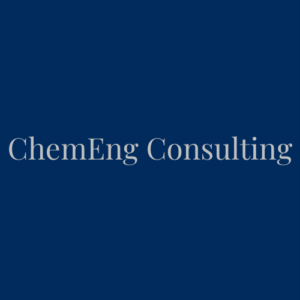The adhesives and sealants market is experiencing significant growth, driven by advancements in construction, automotive, and electronics industries. This article explores the key factors fueling this expansion, including technological innovations, sustainability trends, and increasing demand for high-performance materials. Discover how these sectors are shaping the future of adhesives and sealants.
adhesives-sealants-market-growth-factors
Key Factors Driving the Growth of the Adhesives and Sealants Market
The global adhesives and sealants market has witnessed remarkable growth in recent years, with projections indicating a compound annual growth rate (CAGR) of 5.5% from 2023 to 2030. This expansion is fueled by increasing demand across key industries such as construction, automotive, and electronics. In this article, we delve into the factors driving this growth, highlighting the role of technological advancements, sustainability trends, and evolving industry requirements.
1. Construction Industry: A Major Growth Driver
The construction sector is one of the largest consumers of adhesives and sealants, accounting for over 30% of the global market share. The rise in urbanization, infrastructure development, and green building initiatives has significantly boosted demand.
a. Urbanization and Infrastructure Development
Rapid urbanization, particularly in emerging economies, has led to increased construction activities. Governments worldwide are investing in infrastructure projects, including roads, bridges, and residential complexes, creating a surge in demand for high-performance adhesives and sealants.
b. Green Building Initiatives
Sustainability is a key focus in modern construction. Adhesives and sealants play a crucial role in energy-efficient building designs, such as insulating glass units and eco-friendly materials. For instance, low-VOC (volatile organic compound) adhesives are gaining traction due to their environmental benefits.
c. Technological Innovations
Advancements in adhesive technologies, such as hybrid and polyurethane-based products, are enhancing durability and performance. These innovations cater to the growing need for materials that can withstand extreme weather conditions and provide long-lasting bonds.
2. Automotive Industry: Lightweighting and Electric Vehicles
The automotive sector is another significant contributor to the adhesives and sealants market, driven by the shift toward lightweight materials and the rise of electric vehicles (EVs).
a. Lightweighting Trends
Automakers are increasingly adopting lightweight materials like aluminum and composites to improve fuel efficiency and reduce emissions. Adhesives and sealants are essential for bonding these materials, offering superior strength and flexibility compared to traditional mechanical fasteners.
b. Electric Vehicle Revolution
The growing adoption of EVs is creating new opportunities for the adhesives and sealants market. These vehicles require specialized adhesives for battery assembly, thermal management, and structural bonding. For example, thermally conductive adhesives are critical for maintaining battery performance and safety.
c. Enhanced Performance Requirements
Modern vehicles demand adhesives and sealants that can withstand harsh conditions, including high temperatures and vibrations. Silicone-based sealants, known for their durability and resistance, are widely used in automotive applications.
3. Electronics Industry: Miniaturization and Advanced Materials
The electronics industry is a rapidly growing segment for adhesives and sealants, driven by the demand for smaller, more efficient devices and advanced materials.
a. Miniaturization of Devices
As electronic devices become smaller and more complex, the need for precise and reliable bonding solutions has increased. Adhesives are used in applications such as semiconductor packaging, display assembly, and printed circuit board (PCB) manufacturing.
b. Advanced Materials
The use of advanced materials like flexible substrates and conductive polymers has created new challenges and opportunities for adhesives and sealants. Electrically conductive adhesives, for instance, are essential for ensuring reliable connections in miniaturized components.
c. Thermal Management
With the increasing power density of electronic devices, effective thermal management is critical. Thermally conductive adhesives and sealants are widely used to dissipate heat and prevent device failure.
4. Sustainability and Regulatory Trends
Sustainability is a major driver of innovation in the adhesives and sealants market. Regulatory pressures and consumer demand for eco-friendly products are shaping the industry.
a. Low-VOC and Bio-Based Products
Regulations aimed at reducing VOC emissions have led to the development of low-VOC and bio-based adhesives. These products are gaining popularity across industries due to their environmental benefits and compliance with stringent regulations.
b. Circular Economy Initiatives
The push toward a circular economy is encouraging the development of recyclable and reusable adhesives and sealants. Companies are investing in research to create products that align with sustainability goals.
5. Market Data and Future Outlook
According to a report by Grand View Research, the global adhesives and sealants market was valued at $60.5 billion in 2022 and is expected to reach $90.3 billion by 2030. The Asia-Pacific region dominates the market, driven by rapid industrialization and urbanization in countries like China and India.
a. Regional Insights
North America and Europe are also significant markets, with a strong focus on sustainability and technological innovation. The Middle East and Africa are emerging as lucrative markets due to increasing construction activities.
b. Key Players
Leading companies in the adhesives and sealants market include Henkel, 3M, Sika AG, Arkema, and Dow Inc. These players are investing in R&D to develop innovative products and expand their market presence.
